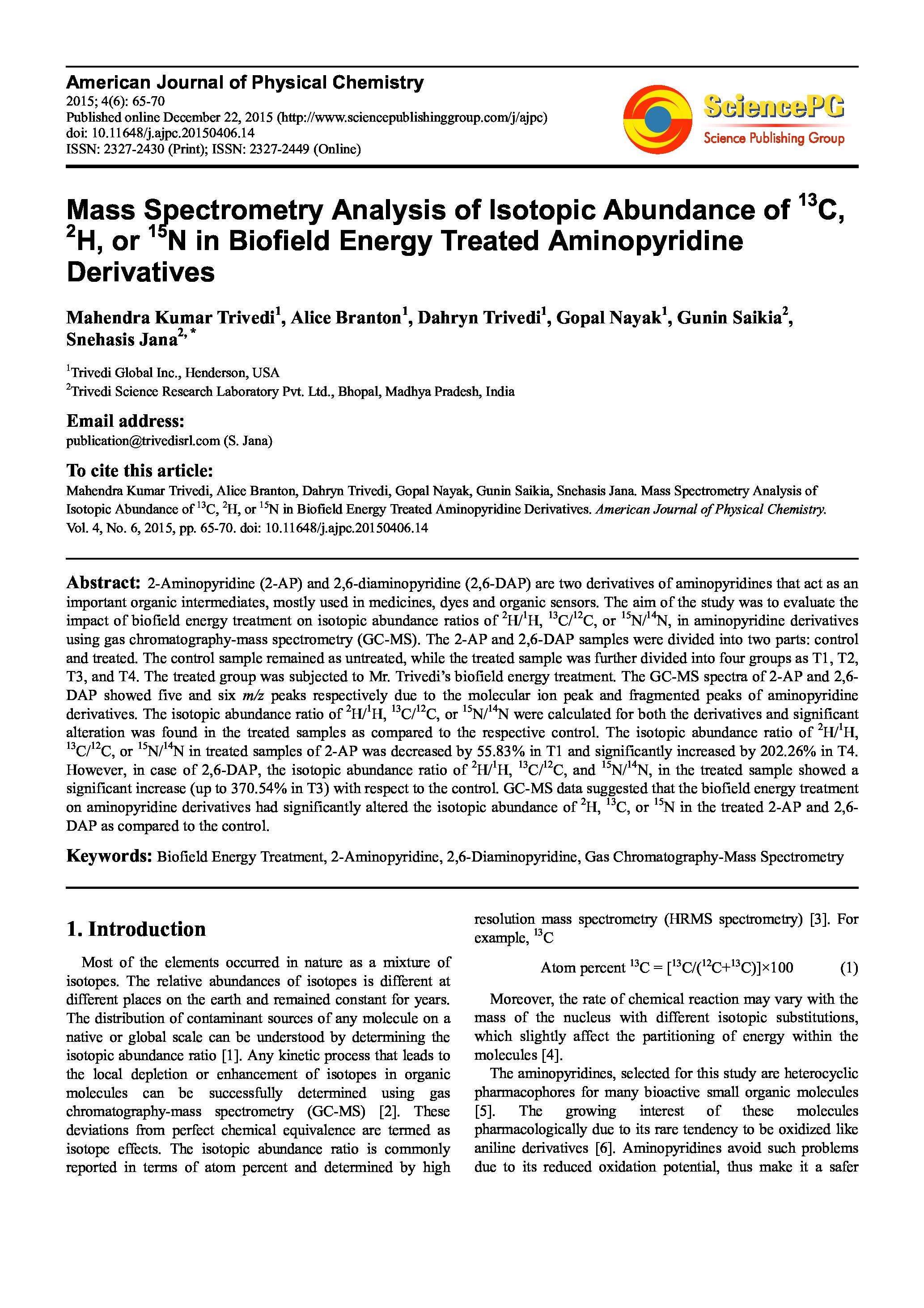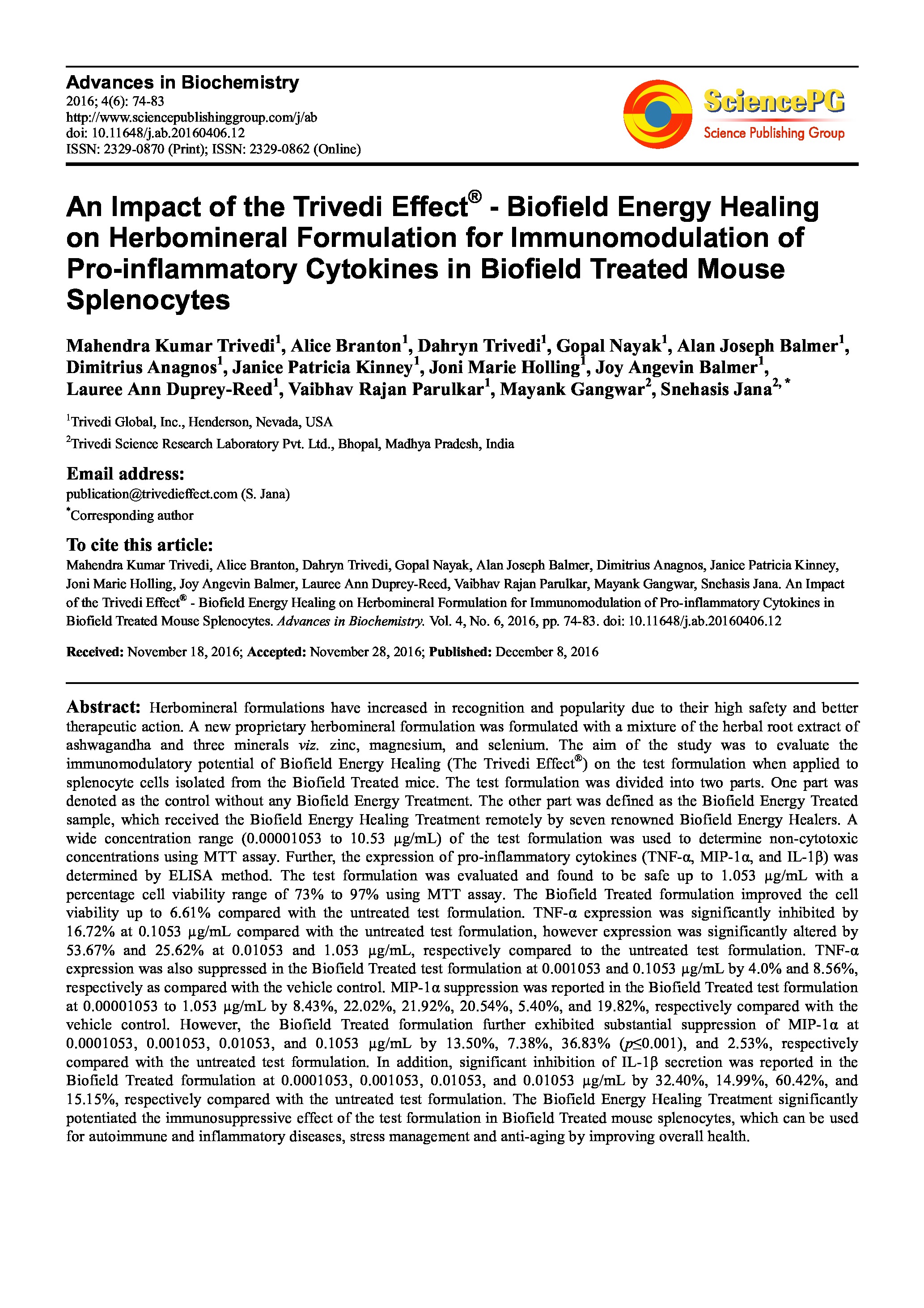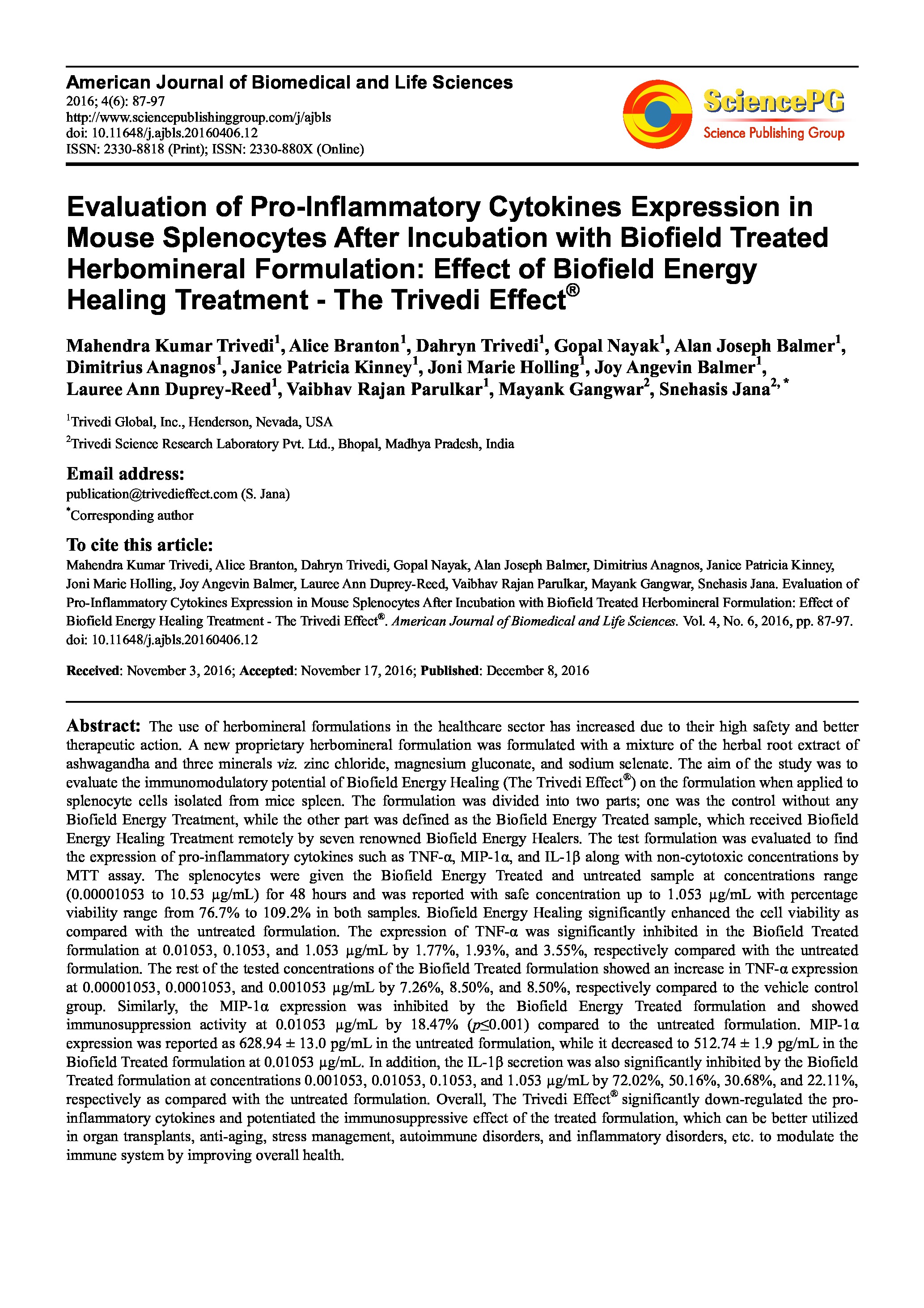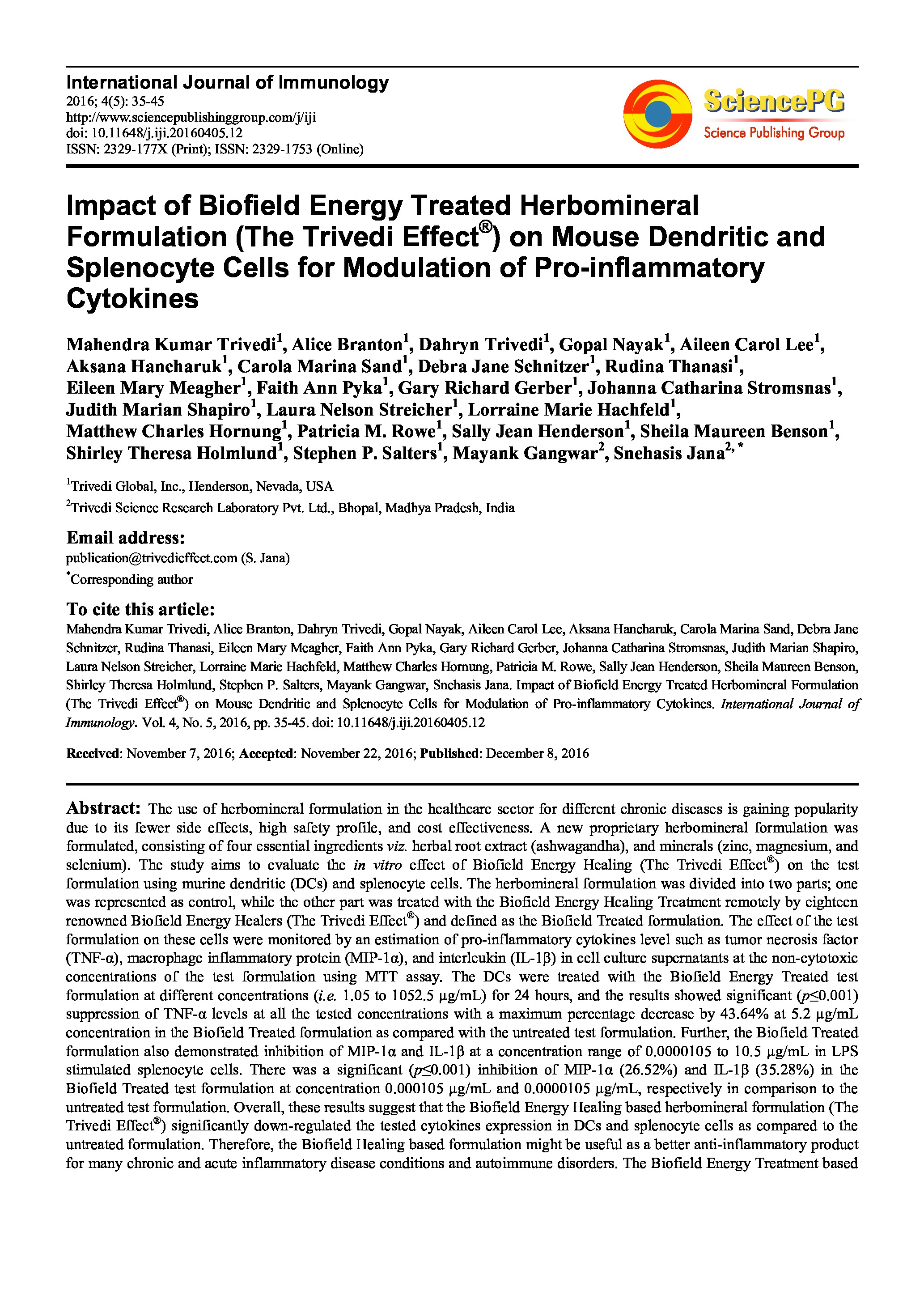Date of upload:
20.12.2016
Co-author:
Mahendra Kumar Trivedi, Alice Branton, Dahryn Trivedi, Alan Joseph Balmer, Dimitrius Anagnos, Janice Patricia Kinney, Joni Marie Holling, Joy Angevin Balmer, Lauree Ann Duprey-Reed, Vaibhav Rajan Parulkar, Mayank Gangwar, Snehasis Jana
Abstract:
The use of herbomineral formulations in the healthcare sector has increased due to their high safety and better therapeutic action. A new proprietary herbomineral formulation was formulated with a mixture of the herbal root extract of ashwagandha and three minerals viz. zinc chloride, magnesium gluconate, and sodium selenate. The aim of the study was to evaluate the immunomodulatory potential of Biofield Energy Healing (The Trivedi Effect®) on the formulation when applied to splenocyte cells isolated from mice spleen. The formulation was divided into two parts; one was the control without any Biofield Energy Treatment, while the other part was defined as the Biofield Energy Treated sample, which received Biofield Energy Healing Treatment remotely by seven renowned Biofield Energy Healers. The test formulation was evaluated to find the expression of pro-inflammatory cytokines such as TNF-α, MIP-1α, and IL-1β along with non-cytotoxic concentrations by MTT assay. The splenocytes were given the Biofield Energy Treated and untreated sample at concentrations range (0.00001053 to 10.53 µg/mL) for 48 hours and was reported with safe concentration up to 1.053 µg/mL with percentage viability range from 76.7% to 109.2% in both samples. Biofield Energy Healing significantly enhanced the cell viability as compared with the untreated formulation. The expression of TNF-α was significantly inhibited in the Biofield Treated formulation at 0.01053, 0.1053, and 1.053 µg/mL by 1.77%, 1.93%, and 3.55%, respectively compared with the untreated formulation. The rest of the tested concentrations of the Biofield Treated formulation showed an increase in TNF-α expression at 0.00001053, 0.0001053, and 0.001053 µg/mL by 7.26%, 8.50%, and 8.50%, respectively compared to the vehicle control group. Similarly, the MIP-1α expression was inhibited by the Biofield Energy Treated formulation and showed immunosuppression activity at 0.01053 µg/mL by 18.47% (p≤0.001) compared to the untreated formulation. MIP-1α expression was reported as 628.94 ± 13.0 pg/mL in the untreated formulation, while it decreased to 512.74 ± 1.9 pg/mL in the Biofield Treated formulation at 0.01053 µg/mL. In addition, the IL-1β secretion was also significantly inhibited by the Biofield Treated formulation at concentrations 0.001053, 0.01053, 0.1053, and 1.053 µg/mL by 72.02%, 50.16%, 30.68%, and 22.11%, respectively as compared with the untreated formulation. Overall, The Trivedi Effect® significantly down-regulated the pro-inflammatory cytokines and potentiated the immunosuppressive effect of the treated formulation, which can be better utilized in organ transplants, anti-aging, stress management, autoimmune disorders, and inflammatory disorders, etc. to modulate the immune system by improving overall health.




